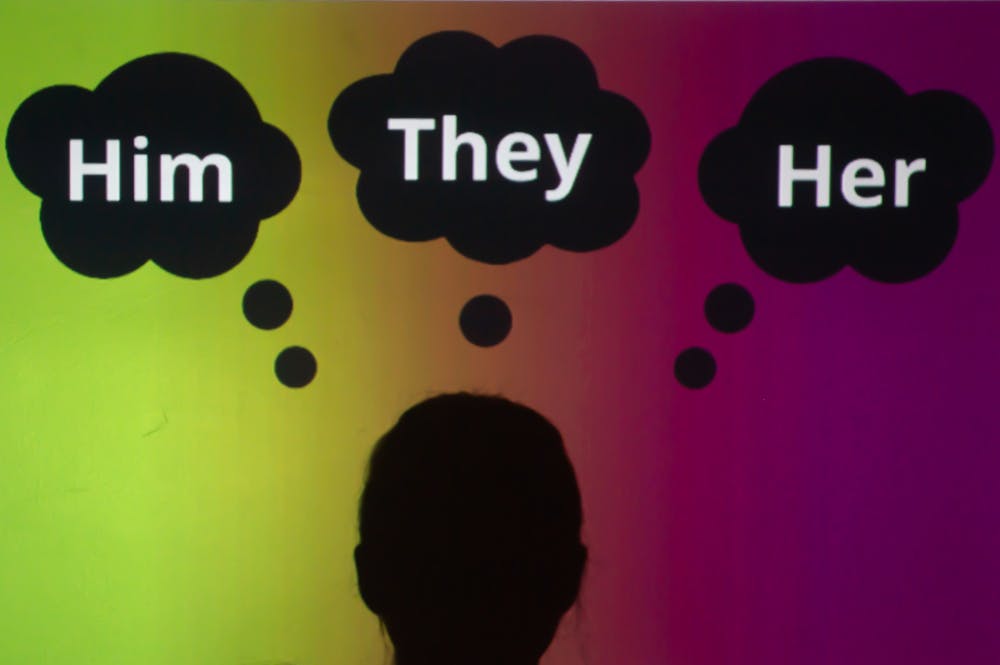In September 2019, Merriam-Webster changed the definition of the word ‘they’ to include usage as a singular pronoun for non-binary people. Just a few years earlier, House Bill 2 was passed in North Carolina, attempting to restrict transgender people from using the bathroom of their identified gender.
The 2010s included several milestones for LGBTQ+ rights and representation and prompted change in the way gender is discussed, both conversationally and academically.
Simon Wolf, 23, holds a master's degree in linguistics from UNC. His academic background in language allows him to view inclusive language as a fluid, social means of transforming the way we interact with one another.
“When I think of inclusive language, mostly I’m thinking about language that is used with an intentional eye toward egalitarianism and with the consciousness of other people in mind,” Wolf said. “We’re in a very interesting linguistic place in terms of the attention we’re paying to speech and language.”
Cai Castillo-Carvajal, a first-year geological sciences and computer science double major, is a counselor with Carolina Kickoff, a Campus Y committee that provides incoming first-year students with a three-day introduction to social justice and campus life at UNC.
“Within the context of Carolina Kickoff, the use of inclusive language is important to me because our campers come from all different backgrounds,” they said.
Rhonda Gibson, 55, is the director of the masters of arts in digital communication through the Hussman School of Journalism and Media. Gibson, having decades of experience in journalism, views inclusive language as a tool to more accurately communicate.
”It is language that is not structured in a way that excludes some people from being able to authentically describe themselves,” she said. “I think that’s what inclusive language does in journalism in particular: It gives us tools that better fit the people we’re writing about.”
Gibson said she believes the past decade was most transformative for language in relation to gender.



